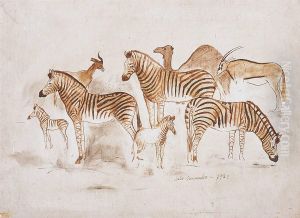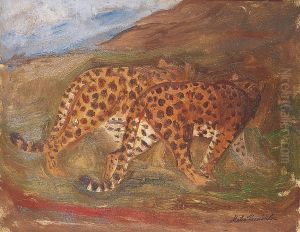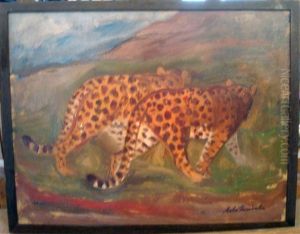Mateo Hernandez Paintings
Mateo Hernández was a notable Spanish sculptor born on October 21, 1885, in Béjar, a town in the province of Salamanca, Spain. Despite his Spanish roots, he spent a significant part of his career in France, where he moved in 1911, seeking the vibrant artistic environment that Paris offered at the beginning of the 20th century. His work was greatly influenced by his love for nature and animals, which is prominently reflected in his sculptures.
Hernández grew up in a family with a tradition in stonemasonry, which undoubtedly influenced his choice of career and his early development as a sculptor. He was initially trained by his father, who was a stonemason. Later, he moved to Madrid to further his studies and was influenced by the works of the great Spanish artists of the time. However, it was in Paris where he found his artistic identity and began to gain recognition for his work.
In Paris, Hernández became a part of the bustling art scene, associating with avant-garde artists and developing his distinctive style. He was particularly known for his direct carving technique, choosing to work directly with materials such as stone and wood, and he rarely used models or preliminary sketches. This approach gave his works a raw and vital quality that was appreciated by his contemporaries.
His sculptures often depicted animals, capturing their essence and movement with a remarkable sense of life and vitality. Hernández's dedication to representing animals went beyond the aesthetic; he saw them as symbols of purity and truth in contrast to the corruption he perceived in human society. One of his most famous works is 'La Osa', a sculpture of a bear, which showcases his skill in rendering animal figures with both power and tenderness.
Hernández's work was not only celebrated in France but also in Spain, where he exhibited his sculptures on several occasions. He was awarded the Medal of Honor at the National Exhibition of Fine Arts in Madrid in 1926, affirming his status as one of the prominent sculptors of his time.
Sadly, the outbreak of the Spanish Civil War in 1936 deeply affected Hernández, who was very attached to his Spanish roots. The conflict and its aftermath led him to isolate himself from the artistic community. His later years were marked by solitude, and his artistic production diminished. Mateo Hernández passed away on January 20, 1949, in Paris. Despite his relatively brief career, his contributions to the field of sculpture, particularly his innovative approach to animalier sculpture, have ensured his place in the annals of art history.


